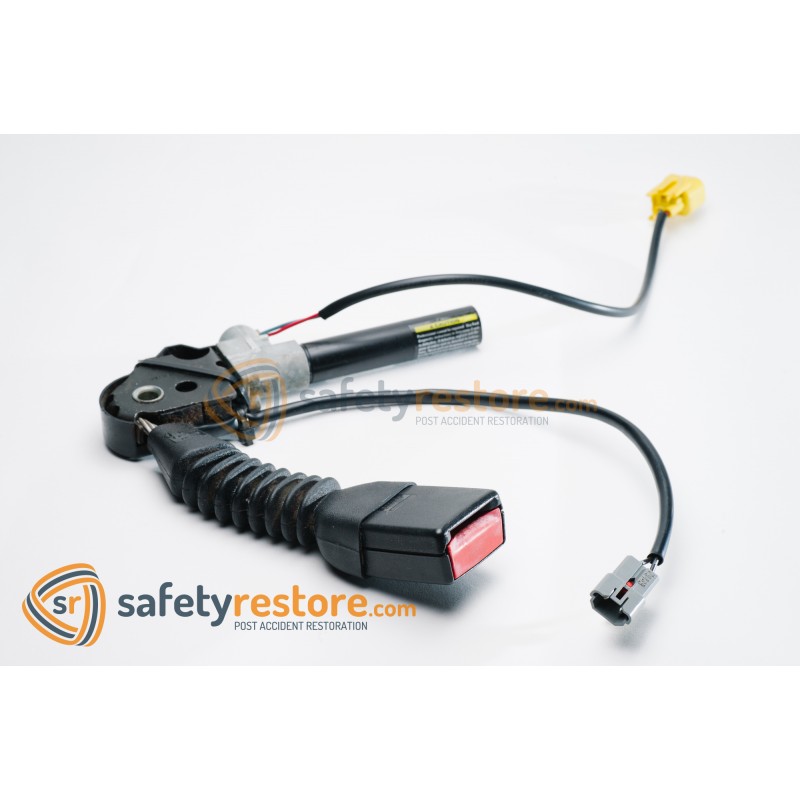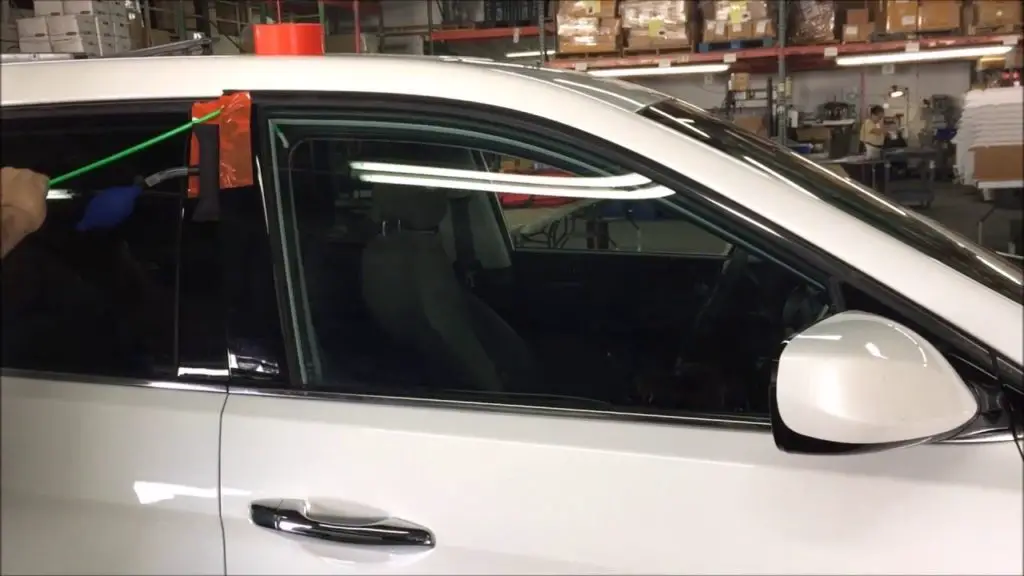To reset seat belts after an accident, replace the damaged seat belt system entirely. Consult a professional mechanic for safety.
Seat belts are vital for vehicle safety, protecting passengers during accidents. After a crash, seat belts can lock or sustain damage, compromising their effectiveness. Resetting them isn’t a simple task and often requires a complete replacement. This ensures the integrity and functionality of the safety system.
Always prioritize professional assistance to handle this critical repair. Properly functioning seat belts are crucial for the safety of everyone in the vehicle. Ignoring damaged seat belts can lead to severe consequences during future accidents. Investing in professional help guarantees that the seat belts will perform correctly, ensuring maximum protection.
The Importance Of Seat Belt Maintenance
Seat belts can save lives. After an accident, they might not work well. It’s important to check them. Seat belts can stretch or get damaged. Broken seat belts cannot protect you. Replacing or fixing them is crucial.
Functional seat belts save lives. They keep you in place during a crash. Without them, you can get hurt badly. Always ensure your seat belts work well. Safety comes first.
Identifying Seat Belt Damage
Look at the seat belt fabric for frays or tears. Check the stitching to see if it is coming loose. Examine the buckle for any visible cracks or damage. Pull the seat belt out fully to see if it retracts smoothly. Feel the belt for any stiffness or unevenness. Inspect the plastic parts for any signs of wear or cracks.
Listen for strange noises when you pull the seat belt. Check the retractor to see if it is stuck or slow. Test the buckle to ensure it locks and unlocks properly. Look for warning lights on your dashboard related to seat belts. Feel the seat belt tensioner to ensure it is not loose. Observe for any resistance when pulling the seat belt.
Types Of Seat Belt Mechanisms
Retractor systems are key for seat belts. These systems keep the belt tight. A retractor has a spool and spring. The spool winds the belt. The spring provides tension. During an accident, the spool locks. This prevents the belt from extending. The locking mechanism keeps passengers safe. Manual retractors need user adjustment. Automatic retractors adjust on their own.
Pre-tensioners enhance seat belt safety. They activate in a crash. A sensor detects the impact. The pre-tensioner then tightens the belt. This pulls the passenger back into the seat. The system helps reduce injury. Pre-tensioners work with airbags. Together, they provide better protection. Gas generators or pyrotechnics drive pre-tensioners. They make the belt fit snugly.
Preparation For Seat Belt Reset
Resetting seat belts after an accident requires proper preparation. Ensure all tools and replacement parts are ready before starting. Follow the vehicle’s manual for specific instructions.
Safety Precautions
Always turn off the car before starting. Wear protective gloves and safety glasses. Keep children and pets away from the work area. Ensure the car is on a flat surface. Disconnect the car battery to avoid electric shocks. Do not rush the process. Take your time to ensure all steps are followed correctly.
Tools And Materials Needed
| Tool | Purpose |
|---|---|
| Screwdriver | To remove and install screws |
| Socket wrench | To loosen and tighten bolts |
| Protective gloves | To protect your hands |
| Safety glasses | To protect your eyes |
| Replacement seat belt kit | To replace damaged parts |
The Reset Process
First, make sure the vehicle is parked safely. Locate the seat belt retractor. It is usually inside the car panel. Remove the panel cover to access the retractor. Gently pull the seat belt out until it stops moving. Let the belt retract slowly. Repeat this process a few times. This helps reset the locking mechanism. Ensure the belt moves smoothly before putting the panel cover back.
Check the pre-tensioner unit for any signs of damage. Disconnect the battery to avoid electrical hazards. Locate the pre-tensioner connector. Unplug it carefully. Wait for a few minutes to let the system reset. Plug the connector back into its place. Reconnect the battery and test the seat belt. The pre-tensioner should engage properly now. If not, consult a professional for help.

Credit: m.youtube.com
Testing Seat Belt Functionality
Check the seat belt for any damages. Ensure the belt retracts smoothly. Pull the belt out completely and let it retract. Make sure it does not get stuck. Verify the buckle clicks securely. Test the belt by tugging it sharply. It should lock immediately. Ensure the belt retracts without slack.
Perform simulated wear tests on the seat belt. Pull and release the belt multiple times. Check for any signs of wear. Ensure the belt maintains its shape. Stress test by applying force. Observe how the belt responds. Look for signs of fraying or damage. Repeat the process to ensure reliability.
Professional Help Vs. Diy
Resetting seat belts after an accident can be complex. Professional help ensures safety and proper functionality, while DIY methods may lack reliability.
When To Seek Expert Assistance
Seat belts are crucial for safety. After an accident, they might need fixing. Sometimes, it’s best to get help from a pro. Experts know how to check for damage. They use special tools. They can ensure your seat belts work right.
Doing it yourself can be risky. If you don’t fix it well, the seat belt might fail. This can be dangerous in another accident. Always think about safety first. If you are unsure, call an expert. Your life may depend on it.
Benefits Of Professional Repair
Getting a pro to fix your seat belts has many perks. They have the right tools and parts. They can fix the seat belts fast. Pro repairs last longer. They also come with a warranty. This means if something goes wrong, you are covered.
Professionals follow strict rules. This ensures the seat belts are safe to use. You can trust their work. It gives peace of mind. Safe seat belts mean safer rides for everyone.
Maintaining Seat Belts Post-reset
Regularly inspect seat belts for any signs of wear and tear. Look for frayed edges or cuts. Check the buckle to ensure it clicks properly. Test the retractor by pulling the seat belt sharply. It should lock immediately. Keep the seat belts clean by wiping them with a damp cloth. Dirt can weaken the fabric over time.
Store seat belts properly when not in use. Avoid letting them twist or tangle. Do not expose seat belts to harsh chemicals. Use mild soap and water for cleaning. Replace seat belts if they show significant damage. Safety always comes first. Consult a professional if unsure about seat belt conditions.
Legal And Safety Considerations
Seat belts are crucial for safety. They protect passengers during accidents. Following safety laws is important. It ensures everyone’s safety. Resetting seat belts after an accident is often required by law. Always check your local regulations. Ignoring this can be dangerous. You may face fines or penalties. Proper compliance keeps you safe and avoids legal issues.
Insurance companies may check your seat belts after an accident. Properly reset seat belts can affect your claims. Faulty seat belts might lead to denied claims. This can increase your costs. Liability issues can arise if seat belts are not reset. Ensuring seat belts are reset helps avoid these problems. It keeps you covered by insurance.

Credit: murphylawyer.com

Credit: www.safetyrestore.com
Frequently Asked Questions
How To Reset Seatbelt Sensor?
Turn off the vehicle. Disconnect the battery. Wait 10 minutes. Reconnect the battery. Start the car. The sensor should reset.
How Do You Reset A Seat Belt Retractor?
To reset a seat belt retractor, pull the seat belt out completely. Release it slowly to allow it to retract fully.
How Much Does It Cost To Reset A Seatbelt?
Resetting a seatbelt typically costs between $50 and $150. The price varies based on the vehicle model and service provider.
How To Unlock Seat Belts After Airbag Deploy?
To unlock seat belts after airbag deployment, disconnect the car battery for a few minutes. Reconnect and reset the system. If the seat belts remain locked, consult a professional mechanic for further inspection and repairs.
Conclusion
Resetting seat belts after an accident is crucial for safety. Follow the steps carefully to ensure proper function. Always consult your vehicle’s manual and, if needed, seek professional help. By doing so, you maintain your vehicle’s safety features and ensure peace of mind on the road.
Drive safely and stay alert.

